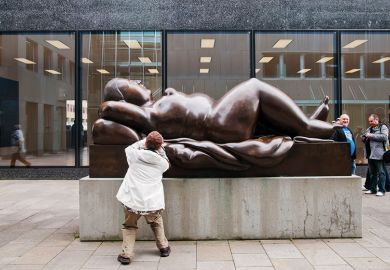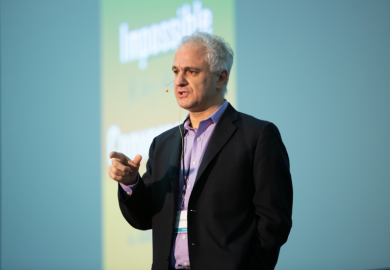The past century's greatest 'sane' logician was a cross between Napoleon and Ariel Sharon, Simon Blackburn discovers
The number of excellent biographies of philosophers has increased dramatically in recent years. And now the works of Ray Monk and Brian McGuinness on Wittgenstein, Manfred Kuehn on Kant, Ben Rogers on A.
J. Ayer and Nicola Lacey on Herbert Hart are joined by this fascinating biography of the great Polish mathematician and logician Alfred Tarski. Anita Burdman Feferman and Solomon Feferman prove the ideal team for a daunting task. She is a well-known biographer, and he was a student of Tarski and is a distinguished logician in his own right, as well as the editor of Kurt Gödel's papers. The result is a brilliant success.
Anyone writing the life of any mathematician, scientist or philosopher faces a double problem. Much of such a life inevitably occurs in the study or at best in lectures or at professional conferences, none of which makes for good copy. And much of it is meaningless unless filled out by an account of what the ideas and achievements were. Tarski's life largely escapes the first problem. He lived through stirring enough times, but when the times were not stirring he was good enough at hell-raising on his own to stop the narrative from flagging. And the Fefermans rise magnificently to the challenge of the second problem by interspersing as separate interludes lucid and enthusiastic introductions to his ideas and methods, so that even if the details of the frightening algebras, geometries, set theories and topologies that were Tarski's meat and drink escape the reader, the general drift need not do so.
Tarski was born Alfred Teitelbaum (or Tajtelbaum, in Polish spelling) in Warsaw in 1901. His Jewish parents were comfortably off and Tarski had an excellent education. He entered the University of Warsaw in 1918, just as Poland was entering a period of independence and nationalistic revival.
Tarski's decision six years later to change his name seems to have had more to do with wanting to be positively Polish than with any attempt to cover up his Jewish background. At university he switched from his first love, botany, to mathematics and logic, both of which were flourishing in Warsaw at the time. His teachers included the fine logician Jan Lukasiewicz, who also served as the university rector, and the formidable Stanislaw Lesniewski, who, apart from being a distinguished logician, served as an assistant to Rosa Luxemburg. Tarski was ideally placed to take his part in the astonishing developments in logic set in train by Frege and Russell a generation previously that were coming to flower in the scientific and mathematical atmosphere of Warsaw.
After his doctorate, Tarski began his prolific publishing career. He married and moved in bohemian and artistic circles. He also made international contacts. So, by what seems to have been pure chance, he left Poland to visit an international conference in the US in 1939, leaving his wife and children behind but almost certainly saving his own life. He eventually settled in Berkeley (his family joined him after the war), becoming supervisor of innumerable graduate students and a huge force in the development of logic for the rest of his life. He died in 1983.
This is the barest outline, but the Fefermans fill it out with meticulous and fascinating detail. It would be natural to call their work a labour of love, but they do not disguise the fact that Tarski was appalling. The general impression is that meeting him would be a bit like meeting an amalgam of Napoleon and Ariel Sharon. You might be charmed or bullied, but one thing was certain, you would be bulldozed: he would be number one and he would get his own way, however outrageous. He could not get on with his children, treated his wife like a chattel (on one occasion forcing her to return from a hard-earned vacation because there was a smell in the refrigerator) and regarded his female students as a harem. He kept graduates waiting for years before signing off their doctorates, and supervisions were conducted during the night hours that he preferred. He installed one mistress in the family home and seems to have made little secret of many others. He also smoked like a trooper and forced friends and students to endure interminable car trips enveloped in tobacco smoke with the windows rolled up.
In spite of this, he was the second greatest logician of the century, or as he preferred to put it, the greatest sane one (Gödel could not really enter that competition). His playground was the new science of formal languages.
Suppose you have a branch of mathematics or science. You might want to formalise it: to see it in terms of a set of axioms, with precise rules of derivation, so that if you purport to prove a theorem, the proof is mechanically checkable as a proof within the system or not. And then you might begin to ask questions: is your system complete and able to give you all the theorems you want? Is it consistent, not giving you any more than you want? Are the axioms independent or can some be proved from others? Is it decidable, so that you know you can tell in finite time whether any particular formula is a theorem or not, as opposed to trying forever without getting a result? Until the flowering of modern logic, these questions admitted no general approach. Results were at best piecemeal. But from about 1915 onwards, theorists began to understand that the key lay in treating systems formally and mathematically. Metalogic - or metatheory, or the theory of theories - was born.
The most powerful and astonishing results of these new approaches were the famous Godel incompleteness theorems of 1931. The first showed that no consistent system strong enough to give all of arithmetic could be complete: there must be sentences that are true but that are not theorems of the system. In arithmetic, truth outruns proof. Second, Godel showed that no system could be powerful enough to prove its own consistency: you always need to wheel up methods stronger than the one you are checking (and, therefore, potentially more doubtful). Equally powerful results about decidability followed shortly after, when Alonzo Church showed that there is no general procedure for determining whether an arbitrary formula of classical logic (first-order predicate calculus) is a theorem of the calculus, and Barkley Rosser extended the result to systems of arithmetic.
To his chagrin, Tarski was pipped to these posts. But in addition to formal results of his own, he produced in 1933 one of the classic documents of the period, and the one that has set philosophers of language puzzling ever since. This was the Wahrheitsbegriff , the essay eventually translated into English as The Concept of Truth in Formalised Languages . The point of the paper is deceptively easy to describe: it gives an account of what is needed to define the notion of truth in a language. But that is something big. For the notion of truth is not the private preserve of metalogicians.
It is a matter of endless speculation and inquiry, one of the oldest and toughest of philosophical nuts. So when a great logician announces that he can say what it is, everyone flocks to the new illumination.
Unfortunately, when philosophers did so, Tarski's light remained disappointingly dim. It all seemed clear enough on the page. Put informally, what Tarski laid down was that an adequate account of truth in a language L would deliver a "T-sentence" for each sentence S of the language. A T-sentence, itself framed in a metalanguage, said that S is T in L if, and only if, p - where p is a translation into the metalanguage of the sentence L. An example would be " la neige est blanc " is true in French, if, and only if, snow is white. Here, English is the metalanguage and French the object language, and this T-sentence is obviously true. So far, so good, but what does it all mean? Was this a new version of the very old Aristotelian idea that truth is correspondence with the facts? Was it a competitor to that idea, or a supplement? It was often said to "relativise the concept of truth to a language", but what exactly did this mean - that truth in French is different from truth in English, for example, in any more than the trivial sense that the languages contain different sentences? If some sceptic or dreadful postmodernist turns up sneering at the very notion of truth, could one wave Tarski's T-sentences at him like garlic at a vampire? Opinions differed, and still do, although many philosophers wear their T-sentences like crucifixes as a talisman against all kinds of disorder. Distinguished and fervent admirers such as the late Willard Quine and Donald Davidson undertook to tell what Tarski meant, but by and large only muddied the waters.
The Wahrheitsbegriff certainly set the subject of model theory on a new and mathematically fertile course. The Fefermans concentrate on this aspect of Tarski's work, meaning that some of the formal interludes become quite hairy. Perhaps naturally, they do not talk much about the shadows over purely formal studies. In the case of scientific theory, for example, axiomatisation can seem fairly pointless in the face of science's open-ended or porous nature. In computing theory, people may be more interested in what can be proved in real time, rather than ideally. There is rather little doubt of this kind in this biography - but that is an attitude of which Tarski himself would have thoroughly approved.
Simon Blackburn is professor of philosophy, Cambridge University.
Alfred Tarski: Life and Logic
Author - Anita Burdman Feferman and Solomon Feferman
Publisher - Cambridge University Press
Pages - 425
Price - £23.00
ISBN - 0 521 80240 7
Register to continue
Why register?
- Registration is free and only takes a moment
- Once registered, you can read 3 articles a month
- Sign up for our newsletter
Subscribe
Or subscribe for unlimited access to:
- Unlimited access to news, views, insights & reviews
- Digital editions
- Digital access to THE’s university and college rankings analysis
Already registered or a current subscriber? Login



